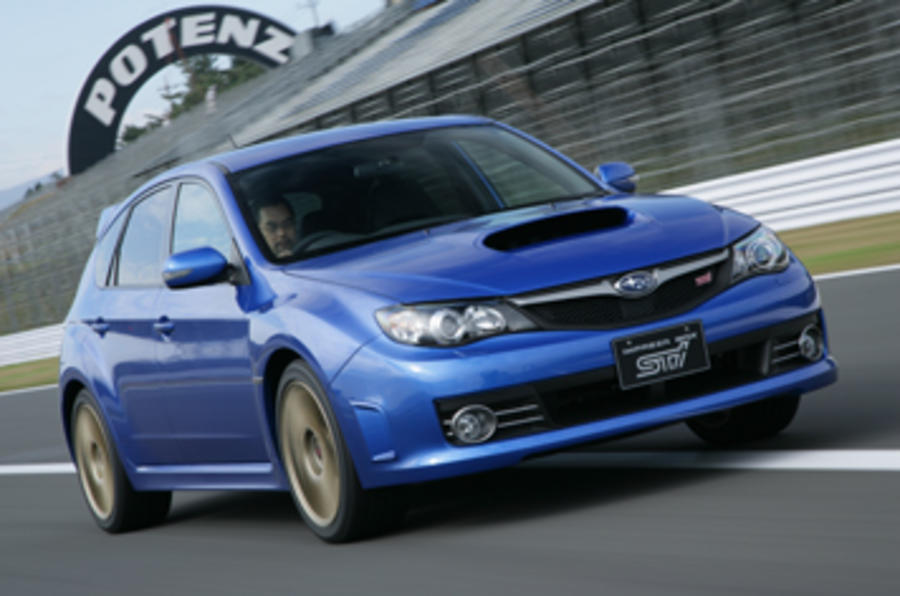What is it?
Subaru’s comeback car, after a run (Tribeca, the Impreza base model) of poorly received new models. Despite its hardcore aspirations, the Impreza STi will be the mainstream high-performance model in the UK. The less spectacularly styled WRX is on a limited run of no more 1000 models over the lifetime of this model.
This Japanese-spec car is powered by a 304bhp, 311lb ft 2.0-litre turbocharged flat-four engine. The UK, however, will get a 2.5-litre version of the motor, which also promises the same wallop with more real world flexibility.
The STi is 55mm wider than the base Impreza and has 45mm and 40mm wider front and rear tracks. Massively extended wings front and rear, a substantial tailgate spoiler and a new bumper designs transform the bearing of the car, taking it a long way from the pinched original.
The bodyshell of the STi has been beefed up with extra stiffening plates around the hatch aperture, the rear chassis rails and under the front chassis rails.
However, the new Impreza is actually lighter than the old model, despite a much stronger chassis. Dropping the front subframe has saved around 25kg.
The STi gets a centre viscous coupling and limited slip differentials front and rear. The rear multi-link suspension is new to this generation of Impreza, as are the aluminium lower suspension arms. Like old model, the front suspension struts are inverted.
The engine sits 22mm lower and the centre differential has been lowered by 10mm. Brembo brakes are fitted, with four-pot callipers at the front and twin-pot at the rear, backed up by a more rigid brake system and ‘super-low expansion’ brake hoses.
New seats are welcome, although this test car was fitted with the swish optional Recaros. STi logos are scattered across the interior, which is improved over the base car thanks to the use of leather and suede and a background upmarket graphite hue.
The dash itself is still disappointingly hard-faced and the rest of the switchgear is no more than respectable. Interestingly, the new centre console detail – which holds the ECU and suspension controls - is much more classy. Hope, perhaps, for an eventually facelift.
What’s it like?
This engine’s delivery is very linear – to the point of feeling a little flat - but you can feel a distinct kick at just over 4000rpm as the power and torque curves cross. It was also very happy to rev right up to the high 7000s – although a red LED on the rev counter face demanded an upshift from the driver.
The brakes felt solid and efficient underfoot, though perhaps a little dead and lacking in feel. The subtleties of the steering were hard to define on Fuji’s mighty sweeping bends and tricky left and right-handed uphill grades. It was, though, accurate and pointy enough to allow the car to be placed quite readily, right on the red and white apex points.
But the most overwhelming memory from the brief eight-lap experience was the Impreza STi’s extraordinary ability to hang on despite the most massive provocation.
Understeer was hardly in evidence, although the car is soft enough to roll quite markedly. It was possible to drive into very long, tight bends and, as long as you stayed hard on the gas, the STi would peel around, simply unwilling to unstick.



























Add your comment